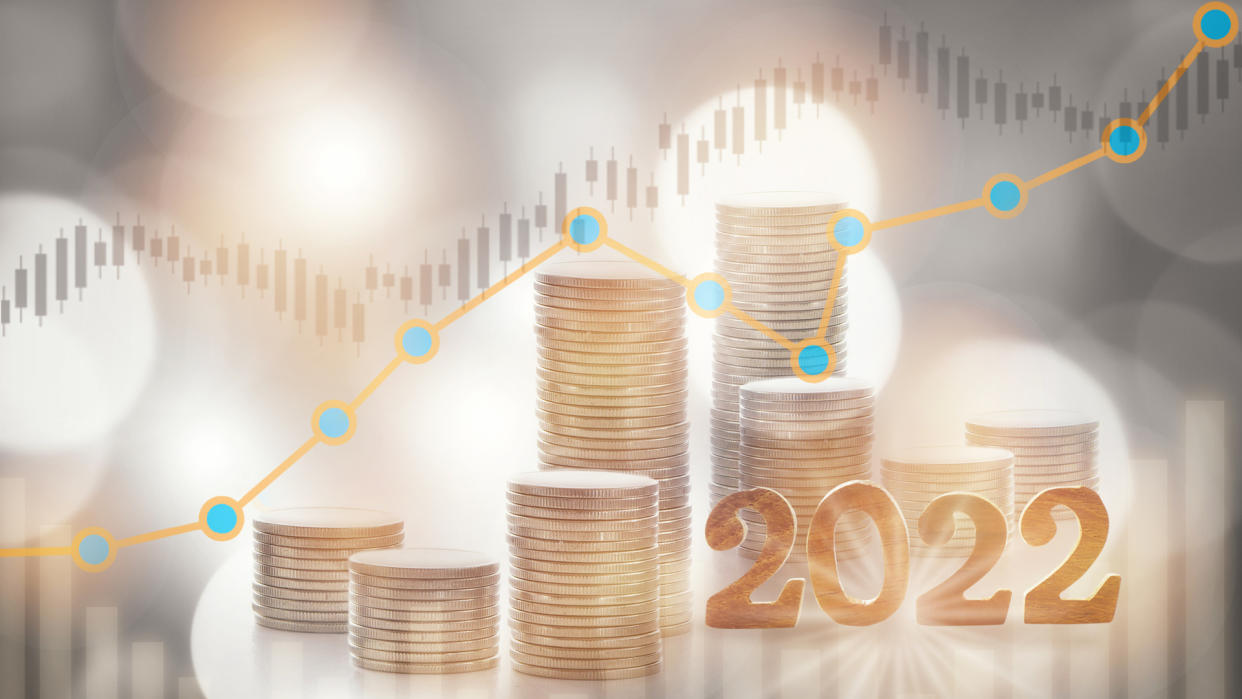Why Inflation And The Supply Chain Could Bring More Volatility To Economic Recovery

Surging prices caused by low supply levels and sudden demand have brought inflation from the near-zero levels enjoyed for nearly a decade to 7% all within the last 12 months. The perfect storm of constricted supply chains abnormally pressured by pandemic side effects has forced prices up in ways that economists are saying have ushered in unconventional markets where inflation is driven by supply instead of the usual demand. The result could be more volatility ahead as the global economy putters towards recovery.
See: Understanding the Differences Between Inflation, Deflation & Stagflation
Find: Social Security COLA: Seniors Will Receive the Highest Increase in Decades, But It’s No Match For 6.2% Inflation Surge
Inflation has been historically (until now) driven by demand. According to economists, the current picture of what’s causing today’s inflation is supply, but it’s a little more complicated than just that.
In a new report by Blackrock, economists state that past episodes of inflation have been driven by economy-wide demand running “unusually hot.” This can mean that there is rampant demand, fueled by both economic growth and an increase in jobs followed by a desire to spend more money across sectors.
A Very Complicated Supply Chain
Right now, they argue, supply bottlenecks are what’s to blame for upwards price pressures. And from a policy perspective, this complicates things. In the more normal, demand-driven inflation, the easy response is an increase in interest rates to generally “cool off” the economy and rein in spending overall. When inflation is supply-driven at a time when the economy is not yet fully up to speed, the answer is not so simple.
Using data from the Bureau of Labor Statistics and the Blackrock Investment Institute, the investment firm shows that the U.S. economy is still below pre-pandemic projections for U.S. GDP. With the economy not yet operating at full capacity and inflation largely driven by supply, Blackrock says central banks are faced with a difficult decision: “either live with higher inflation or destroy activity before reaching full capacity.”
While the economy has largely improved, the labor market is still millions of jobs fewer now than it was in February of 2020. To “destroy activity” would mean to increase interest rates at a suppressive enough rate to bring prices down enough to a sustainable level. This would simultaneously also squash growth at a time when the economy still desperately needs it. The conundrum is one that has never quite been seen before, and central bank responses will also likely be just as unique.
The Ideal Government Response
Blackrock’s suggestion is that the government should ride the current inflation pressures out for now. They recommend gradually increasing interest rates to return to more neutral levels, but not so much as to prevent growth.
Macroeconomic policy strategist and Founder of Ziemba Insights, Rachel Ziemba also agrees that monetary normalization, or the move from “excessive stimulus to more normal conditions” is necessary, but only part of the answer. Ziemba tells GOBankingRates, “central banks should remove some liquidity and cease super-accommodative policies, but that other parts of government need to incentivize more production and do better to incentivize supply chains. This also means resetting expectations around inflation and growth “so that we don’t try to return to historical levels of low inflation.”
She adds that trying to use the blunt tools of too many interest rate increases would likely stunt growth and lead to another recession. Focusing on improving the quality of growth, rather than focusing simply on increasing growth markers, is crucial, she says.
A New Way Forward
This new “macro” normal might mean living with supply-driven inflation, which means governments might have to learn to live with this kind of inflation in order to mitigate growth volatility, Blackrock says.
Ziemba suggests that some ways to address these issues might include selectively cutting tariffs and supply restrictions, and investing in infrastructure to boost potential growth which will increase capacity and bring more people into the workforce. By focusing on production within the U.S., the economy can be less reliant on international supply-chain constraints while simultaneously putting more Americans in jobs.
Spending for this might temporarily increase inflation, it also may pay off big in the future if supply-driven inflation is the new way forward. Blackrock mentions prices tend to rise faster “in response to bottlenecks than they tend to fall in response to spare capacity” and that this has pushed inflation higher even though overall economic activity has not fully recovered. If higher production was done on U.S. soil, this could help to avoid some of these price gauges.
See: While Wages Technically Rose in 2021, Inflation Led to 2.4% Pay Cut for Workers
Find: 5 Times Inflation Is Actually Good for Your Finances
Possible Risks to Investors
For investors, the biggest risk Blackrock sees is rate hikes by central banks feeding into inflation expectations. This would be bad for both bonds and equities as higher interest rates would slow growth overall. The result would be seeing markets price in as they normally do and react to market downturns. The risk runs in that if the central bank decides to reverse course, for example, if they realize they hiked rates too high and too soon and damaged growth too much, they will have to lower interest rates back down. Since investors will already be priced in at previous higher rate levels, investors will stand to lose money based on where they are priced in before a reverse. Greater macro volatility in both growth and inflation will imply higher premiums on bonds and stocks, the investment firm adds.
More from GOBankingRates:
This article originally appeared on GOBankingRates.com: Why Inflation And The Supply Chain Could Bring More Volatility To Economic Recovery

 Yahoo Movies
Yahoo Movies 
